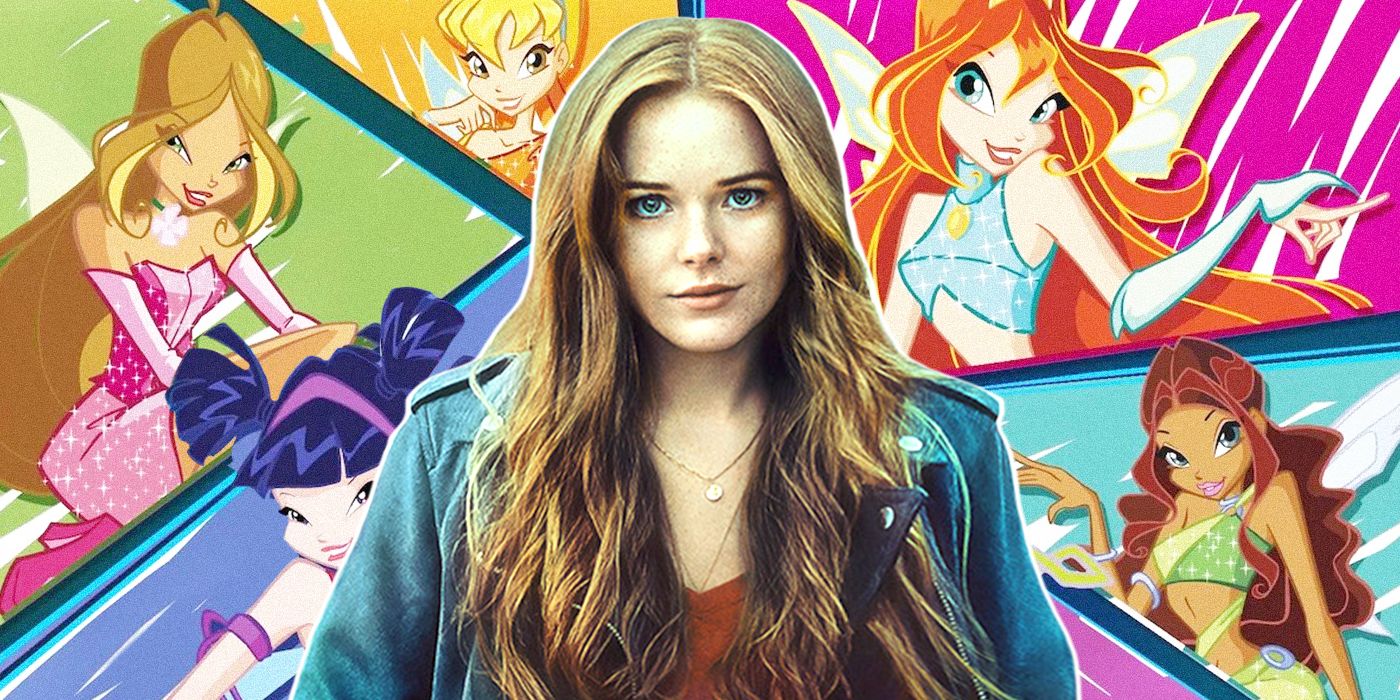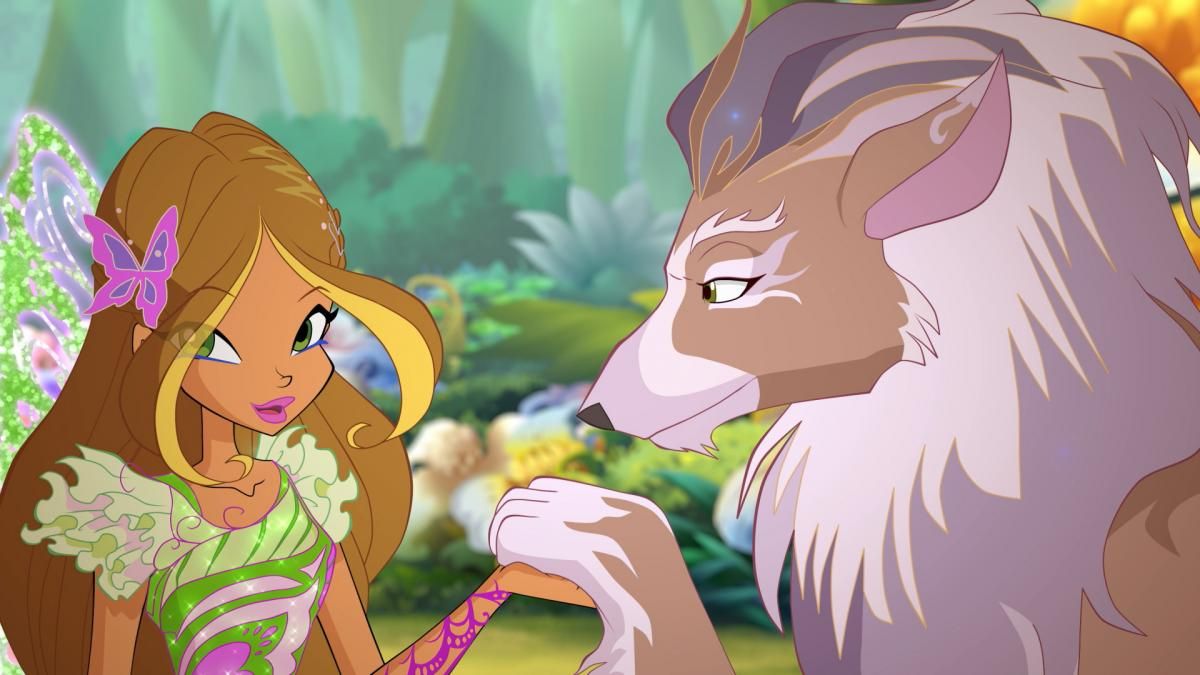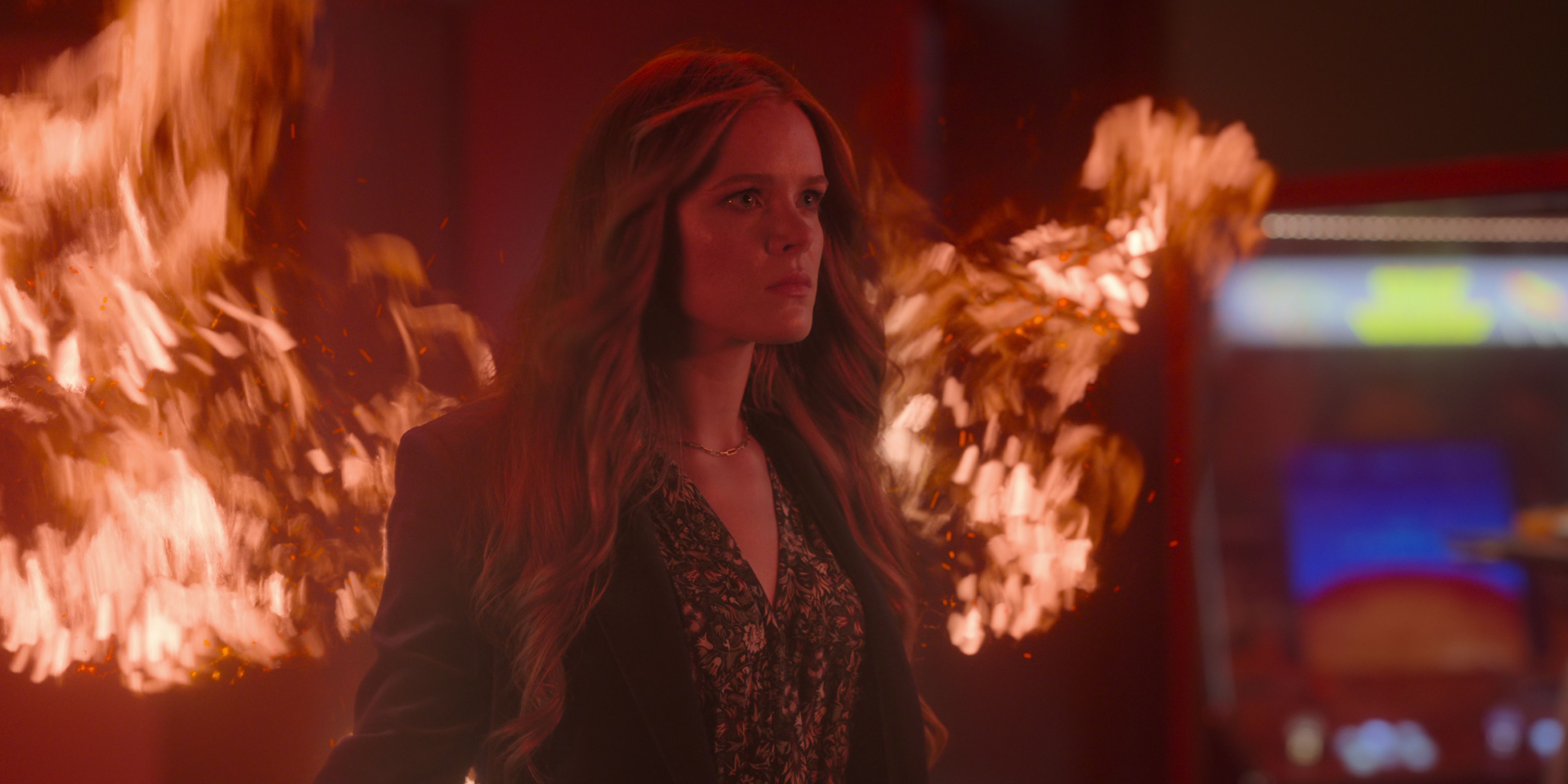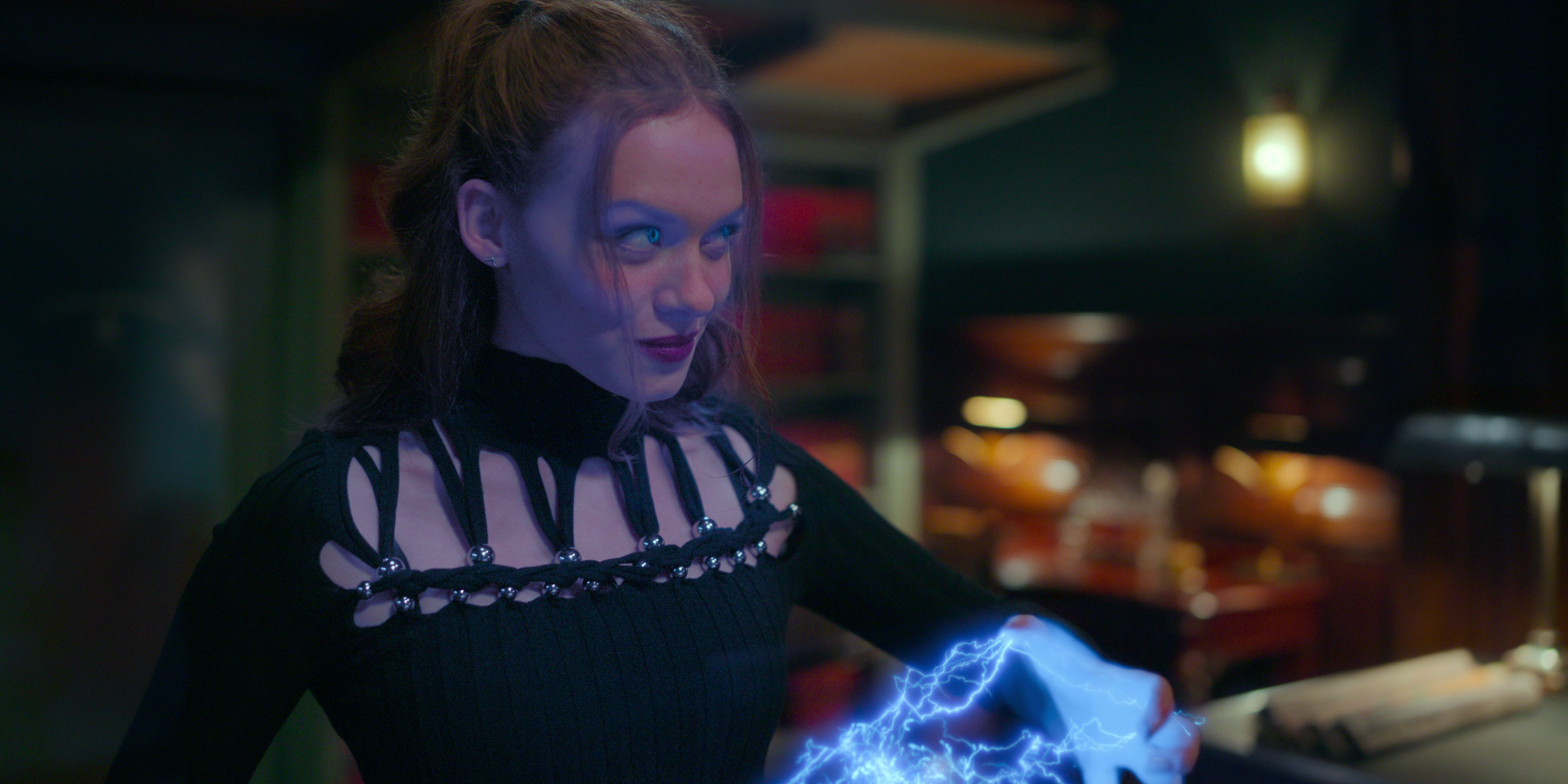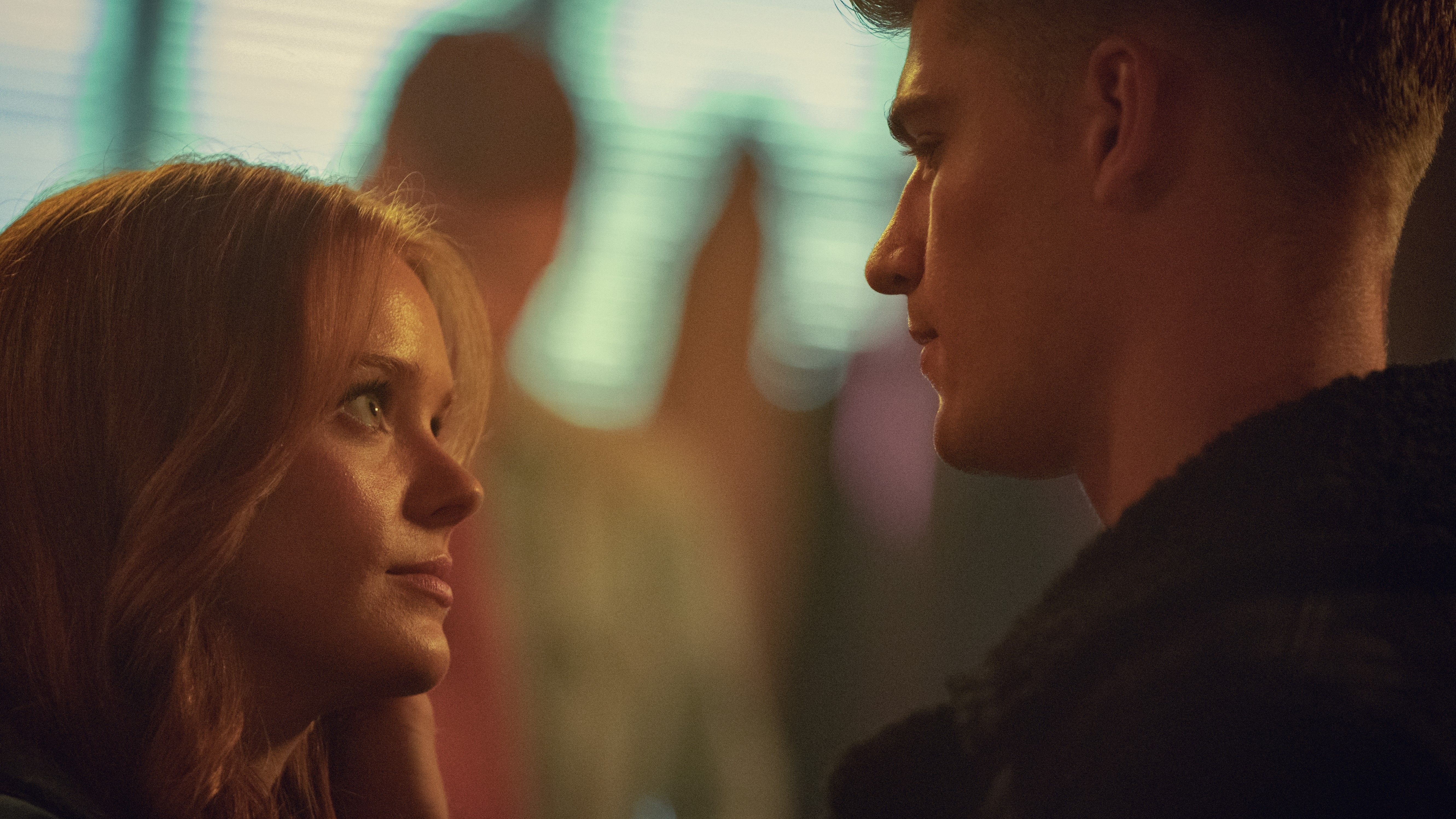In the age of live-action remakes of old and beloved stories, it’s fascinating to keep track of what might become the newest adaptation. Netflix’s Fate: The Winx Saga just released its second season in September, with plenty of material to enjoy and trace back to the original animated series. The addition of Flora (Paulina Cháves) — a beloved character who was sorely missed in Season 1 — is an especially positive change for Fate and brings the adaptation closer to its source material, The Winx Club (2004).
Before we explore the details of Fate’s edits to the original Winx Club story, a bit of a history lesson is necessary to understand the ever-changing nature of Alfea’s most powerful fairy students. Unlike many other remakes (like anime adaptations or live-action Disney films), The Winx Club has been changing in some way ever since its conception.
A Fluid, Ever-Changing Story
The Winx Club wasn’t a completely American property — in fact, it was a collaboration between American and Italian creatives and studios (Nickelodeon and Rainbow SpA), already placing it in the interesting position of being received differently depending on the culture of the viewer. Besides that, the complicated history of the show’s English dub can be a messy subject. The Winx Club has more than two English dubs, making it at least somewhat remade (in terms of voice acting) as far back as its original release.
Some changes, such as voice actors, dialogue, and pacing, were a direct result of the multiple dubs, making it a fluid story right off the bat. There have been multiple offshoots from the original cartoon as well, giving it a rich and complex history, especially when compared to Fate: The Winx Saga. Rather than starting with source material that has tone, dialogue, and characters completely set in stone, Fate is working with continuously-changing source material.
One clear key difference between The Winx Club and the way that Fate’s story is built is the target audience. While Fate’s target demographic is clearly young adults interested in dark epic/urban fantasy, the original cartoon was aimed at younger girls. The Winx Club is part of the magical girl genre, with plenty of dramatic costume transformations, stylish characters (in a Barbie-reminiscent, stick-figure way), and friendship-centered plotlines. Already, the story tones are much different from each other. While Fate centers on the magical school in Althea and the drama between students capable of dangerous magic, Winx Club follows a group of fashionable female fairies as they attend school, find love interests, and battle evil.
Different Stories for Different Audiences
When normal girl Bloom (Molly C. Quinn) meets a wayward fairy princess Stella (Amy Gross), she discovers that she is actually a fairy too — and she enrolls in the Alfea College for Fairies to harness her powers and learn more about her heritage. There, she meets her friends and becomes a true member of the Winx. And it’s here where we have several differences in character from The Winx Club to Fate: The Winx Saga.
Bloom is still the leader with fire-based fairy powers, but her friends change a lot from original cartoon to Netflix adaptation, in which she is portrayed by Abigail Cowen. For the entire first season, Flora doesn’t appear, but when she arrives in Season 2, she retains her nature-based powers involving earth and plant life. Musa (Hiromi Dames) changes from a music fairy to an empath (Elisha Applabaum) — though her character in Fate is still intrinsically linked to music. Aisha (Precious Mustapha), with water-based powers in both the original and in the adaptation, appears in the second season of The Winx Club (Keke Palmer) onward, with some international versions giving her a name change to Layla.
In terms of personality shifts, Stella is the biggest change: the original story portrays her as self-involved and overly obsessed with vanity, but she is also sweet and fiercely protective of her friends — she is the first fairy to meet Bloom and excitedly invites and welcomes her to Alfea, becoming her best friend right off the bat. Fate portrays a harsher version of Stella (Hannah van der Westhuysen). Though her powers of creating light are similar in both, the Netflix series portrays Stella as a spoiled rotten wealthy girl to go with her reliance on fashion and her own vanity. While this presents a greater opportunity for character growth by pitting her against Bloom as a potential rival, the best friend quality falls by the wayside.
One character from the original cartoon, Tecna (Morgan Decker), doesn’t appear at all in Fate, which may have to do with her technology-based powers not necessarily fitting in well with the nature-based magic system of Netflix’s version. Perhaps to replace her, or to serve as a substitute for Flora for season one, Terra (Eliot Salt) is an original character created specifically for Fate.
Magic System and Worldbuilding
The magic system and worldbuilding are quite different from original to adaptation as well. For example, in the original cartoon, the Specialists only consisted of male characters who aren’t fairies but are instead warriors. They also don’t attend Alfea, but rather a neighboring college called the Red Fountain School. The gender-based distinction between fairy and specialist draws a solid line between woman and man, a binary structure that Fate chose to change. In Fate, both men and women are Specialists. A rival school called the Cloud Tower School for Witches houses the trio of villainesses that inspired the single villainous character Beatrix (Sadie Soverall) in Fate.
The existence of several different schools points to a larger worldbuilding difference between the two versions of Winx. While the Netflix adaptation only represents two worlds (Earth and the Otherworld), the cartoon includes a nigh-infinite amount of dimensions, which presents plenty of opportunities for world exploration and all sorts of fun adventures for the girls to explore. Fate’s limit to just two dimensions narrows its story focus in just the right way for a serial drama.
In terms of character relationships and changes in personality, in Fate, Bloom’s love interest Sky (Danny Griffin) finds himself in the middle of a love triangle with Bloom and Stella, having dated Stella his first year at Alfea. This drama does have roots in the original show, but in a much different way. In The Winx Club, Bloom falls in love with a Specialist named Brandon (Matt Shively), while Stella falls for Prince Sky (Adam Gregory) — only to find out that the two switched identities.
The mix-up doesn’t cause any animosity between Bloom and Stella, but rather between Stella and her love interest (who turns out to be the prince’s squire), not because he isn’t a royal like he said, but because he was dishonest about who he was. This encapsulates The Winx Club’s emphasis on friendship and honesty, and shows Stella in a more positive light than her jealous counterpart in Fate, the latter presenting a much darker tone than the original cartoon.
In terms of story structure, The Winx Club uses the episodic week-by-week storylines that are most commonly found in children’s media, but it also has several throughlines that are sometimes seasons long. Fate drops the serial story beats entirely in favor of the more connected, bingeable structure that is most often used for Netflix dramas and which feels more like an extended movie than a series of episodes. This way, Fate can cover a completely different plotline than its source material, allowing for a fresh story involving familiar characters.
In the end, Fate: The Winx Saga, while a fundamentally different type of story in a variety of ways, still maintains plenty of the magic of the original Winx Club, in that it is a story that’s always changing. If the Winx ever become the focus of other adaptations, it’s not outside the realm of possibility to get yet more different iterations of the same beloved characters with slightly different personalities and worlds. The Winx are unlike many of their modern peers, in that their existence has been dependent on flexibility and change — and that’s where the true magic lies.

